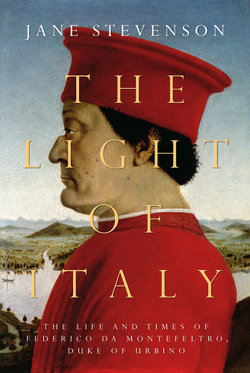The story of the Renaissance city and palace of Urbino, and the life of the extraordinary man who created it: Federico da Montefeltro, humanist, book-collector, patron of celebrated artists and battle-scarred mercenary soldier.
The hilltop town of Urbino, on the eastern side of Italy's Apennines, is an idyllic place of steep streets lined with houses and palazzi of weathered brick. In the fifteenth century it was the shining capital of a cultured duchy, ruled by a remarkable man.
The one-eyed mercenary soldier Federico da Montefeltro, lord of Urbino between 1444 and 1482, was one of the most successful and extraordinary condottiere of the Italian Renaissance: renowned humanist, patron of the artist Piero della Francesca, and creator of one of the most celebrated libraries in Italy outside the Vatican. From 1460 until her early death in 1472 he was married to Battista, of the formidable Sforza family, their partnership apparently a blissful one. In the fine palace he built overlooking the rooftops of Urbino, Federico assembled a court regarded by many as representing a high point of Renaissance culture. For Baldassare Castiglione, author of The Book of the Courtier, Federico was la luce dell'Italia – 'the light of Italy'.
Jane Stevenson's affectionate account of Urbino's flowering and decline casts revelatory light on patronage, politics and humanism in fifteenth-century Italy. It also depicts the physically demanding lifestyles of Italy's mercenary captains and the often prominent political and cultural roles played by their wives during their protracted absences on campaign. As well as recounting the gripping stories of Federico and his Montefeltro and della Rovere successors, The Light of Italy considers in details Federico's cultural legacy – investigating the palace itself, the splendours of the ducal library, and his other architectural projects in Gubbio and elsewhere.



Share This Book: